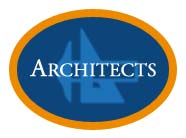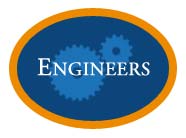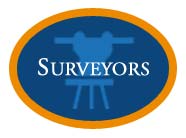In today’s world of rapidly evolving technology, it’s easy to overlook the treasures of the past. Yet, hidden within dusty archives and aging collections, lie old maps that can be brought to life using modern advancements. From ancient civilizations to historic neighborhoods, these maps hold valuable insights into the past and, with the aid of cutting-edge techniques, offer new perspectives for contemporary research and engagement.
Unleashing Historical Riches with Machine Learning
For centuries, cartographers meticulously crafted maps, capturing the essence of the world they inhabited. Today, machine learning algorithms are unlocking the full potential of these maps.
Researchers, at Ohio State University, have developed a method to create 3D digital models of historic neighborhoods using machine learning and historic Sanborn Fire Insurance maps. This advancement allows for virtual exploration of long-gone neighborhoods, offering valuable resources for urban historical research. The study’s machine learning tools extract details from the maps, enabling the recreation of individual building information, including location, footprints, floors, construction materials, and primary use.
The researchers tested their technique on two neighborhoods in Columbus, Ohio, destroyed in the 1960s for highway construction. The accuracy of the models was impressive, around 90% accurate for building footprints and materials. This technology opens doors to various research possibilities, such as estimating economic losses caused by the demolition of historic neighborhoods and studying the impact of urban renewal and changes over time.
The researchers believe this method can be applied to nearly any of the 12,000 cities and towns with Sanborn maps, allowing the recreation of neighborhoods lost to various factors like natural disasters, urban renewal, and depopulation.
Here are some of the ways these new 3D models of old maps can be used:
- Preserving Cultural Heritage
Old maps are not only historical artifacts but also crucial components of cultural heritage. The preservation and restoration of these documents have become a priority for archivists and historians. By digitizing and creating 3D models of these maps, researchers are safeguarding cultural legacies for future generations. Moreover, by making them accessible online, people from around the world can connect with their ancestral roots, fostering a deeper appreciation for their shared history.
- Reviving Lost Landscapes
Urban development and natural disasters have erased many historic neighborhoods from existence. However, through the fusion of old maps and modern technology, these lost landscapes are experiencing a renaissance. With 3D models, virtual reality headsets, and augmented reality applications, individuals can step into the past, stroll down the streets of bygone cities, and marvel at their architectural wonders. The ability to revisit these areas not only adds to our historical knowledge but also rekindles a sense of nostalgia and fosters an understanding of how our cities have evolved over time.
- Enabling Multifaceted Research
Beyond the novelty of virtual exploration, the digitization of old maps opens doors to a wide range of research opportunities. Researchers can now conduct detailed studies on urban development, economic shifts, social structures, and more. By comparing historical maps with contemporary data, analysts can assess the impact of urban renewal, depopulation, and natural disasters on cityscapes. Moreover, these 3D models allow for comprehensive analysis of architectural patterns, helping historians trace the evolution of building styles and urban planning.
- Understanding the Economic Impact
One exciting prospect that emerges from 3D digital models is the potential to estimate the economic loss resulting from the demolition of historic neighborhoods. By reconstructing buildings and simulating scenarios, researchers can assess the value of cultural heritage lost to urban development. This analysis can raise awareness about the importance of preserving historical areas and inform policymakers on the long-term economic consequences of such actions.
- Studying Environmental Changes
Old maps can provide vital information about environmental changes over time. By comparing historical landscapes with present-day environments, researchers can study the effects of climate change and urbanization. For example, they can examine the impact of replacing green spaces with concrete structures on the urban heat island effect, leading to insights that could inform future urban planning and sustainability efforts.






 We're more than just brokers. We're A/E specialists, delivering the right coverage and exceptional value and service to hundreds of design firms of all sizes. Of course we leverage the latest industry resources to provide you with coverage, risk management and contract review tailored to your practice. But we also remember the difference between simply billing clients and actually serving them. See for yourself. Contact us of a competitive quote on your professional liability insurance.
We're more than just brokers. We're A/E specialists, delivering the right coverage and exceptional value and service to hundreds of design firms of all sizes. Of course we leverage the latest industry resources to provide you with coverage, risk management and contract review tailored to your practice. But we also remember the difference between simply billing clients and actually serving them. See for yourself. Contact us of a competitive quote on your professional liability insurance.